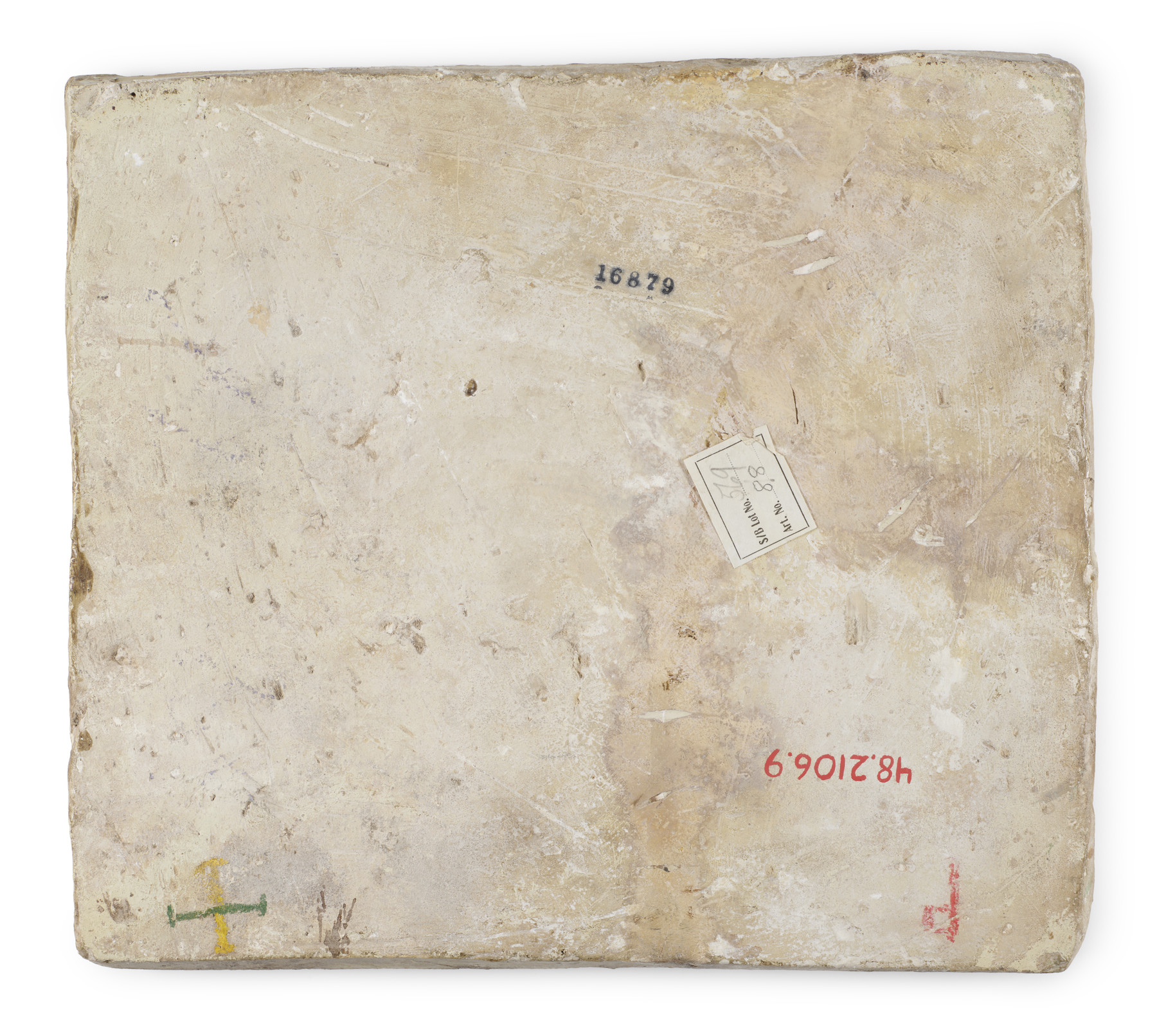Ceiling Tile with a Dog
(Renaissance Europe )
Tiles of this kind, known in Spanish as soccarats, were arranged facing down between ceiling crossbeams. This one, together with Walters 48.2106.1, 48.2106.2 and 48.2106.8, comes from a large residence in the southern Spanish city of Valencia. Little is known about the original use of the building, demolished around 1890: it probably belonged to a local aristocrat. The images of hounds and wild animals on its ceiling alluded to hunting, a favorite sport of the nobility.
Provenance
Provenance (from the French provenir, 'to come from/forth') is the chronology of the ownership, custody, or location of a historical object. Learn more about provenance at the Walters.
[House at 14 calle de Roteros (?)], Valencia; Sale, ca. 1890 (?); William R. Hearst, San Simeon, California, ca. 1930, by purchase; Hearst estate, 1951, by bequest [inv. 2597, lot s/b 569, no. 88]; Walters Art Museum, 1958, by purchase.
Exhibitions
| 2008-2009 | Realms of Faith: Medieval and Byzantine Art from the Walters Art Museum. Museum of Biblical Art, New York; Colby College Museum of Art, Waterville; Joslyn Art Museum, Omaha. |
Geographies
Spain, Paterna
(Place of Origin)
Spain, Valencia (Place of Discovery)
Measurements
H: 12 9/16 x W: 14 1/4 x D: 1 3/16 in. (31.9 x 36.2 x 3 cm)
Credit Line
Museum purchase, 1958
Location in Museum
Accession Number
In libraries, galleries, museums, and archives, an accession number is a unique identifier assigned to each object in the collection.
In libraries, galleries, museums, and archives, an accession number is a unique identifier assigned to each object in the collection.
48.2106.9




